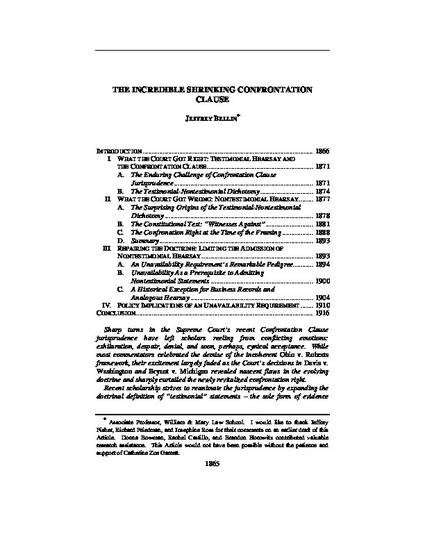
Sharp turns in the Supreme Court’s recent Confrontation Clause jurisprudence have left scholars reeling from conflicting emotions: exhilaration, despair, denial, and soon, perhaps, cynical acceptance. While most commentators celebrated the demise of the incoherent Ohio v. Roberts framework, their excitement largely faded as the Court’s decisions in Davis v. Washington and Bryant v. Michigan revealed nascent flaws in the evolving doctrine and sharply curtailed the newly revitalized confrontation right.
Recent scholarship strives to reanimate the jurisprudence by expanding the doctrinal definition of “testimonial” statements – the sole form of evidence that the Court now recognizes as implicating the Confrontation Clause. This Article targets a similar objective through a less-traveled path. It accepts the Court’s focus on, and definition of, “testimonial” statements as a valid, even inevitable, jurisprudential development. This Article seeks instead to expand the reach of the confrontation right to “nontestimonial” hearsay, arguing that constitutional limits – albeit less strict ones – are also warranted for this type of evidence in light of the policies, text, and history of the Confrontation Clause. The Article then details how the Supreme Court can (consistent with the overarching historical, textual, and policy arguments noted above) integrate these limits on the admission of nontestimonial hearsay into its new jurisprudence.
Available at: http://works.bepress.com/jeffrey-bellin/35/
